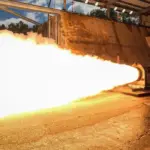By George Lobsenz At a nuclear security summit that yielded several other nonproliferation victories for President Obama, the United States and Russia signed a new agreement Tuesday that revives a 2000 plutonium disposal pact between the new countries by formally allowing Russia to use fast reactors to burn up the weapons-usable material--providing those facilities are modified to prevent the "breeding" of additional plutonium. The agreement appears to follow the lines of a preliminary deal negotiated by the Bush administration and…
Contract Updates
Intertrade Limited (Cedar Rapids, Iowa) – $9,272,637
Intertrade Limited, Cedar Rapids, Iowa, has been awarded a maximum $9,272,637 firm-fixed-price contract for F-16 generator controls. This was a sole-source acquisition using justification 10 U.S. Code 3204 (a)(1), as stated in Federal Acquisition Regulation 6.302-1. This is a four-year…
Cottonwood Inc. (Lawrence, Kansas) – $44,370,000
Cottonwood Inc.,** Lawrence, Kansas, has been awarded a maximum $44,370,000 firm-fixed-price, indefinite-quantity contract for aircraft cargo tie down straps. This was a sole-source acquisition using justification 10 U.S. Code 3204 (a)(5), as stated in Federal Acquisition Regulation 8.7. This is…
Teva Pharmaceuticals USA Inc. (Parsippany, New Jersey) – $46,087,497
Teva Pharmaceuticals USA Inc., Parsippany, New Jersey, has been awarded a maximum $46,087,497 modification (P00009) exercising the third one-year option period of a five-year base contract (SPE2DP-20-D-0002) with five one-year option periods for adenovirus type 4 and type 7 vaccines.…
Northrop Grumman Systems Corp. (Oklahoma City, Oklahoma) – $64,111,631
Northrop Grumman Systems Corp., Oklahoma City, Oklahoma, has been awarded an estimated $64,111,631 delivery order (SPRTA1-26-F-0034) and modification (P00015) to a four-year subsumable base contract (SPRTA1-19-D-0001) with one five-year option period for additional pricing for the manufacture and production of…













